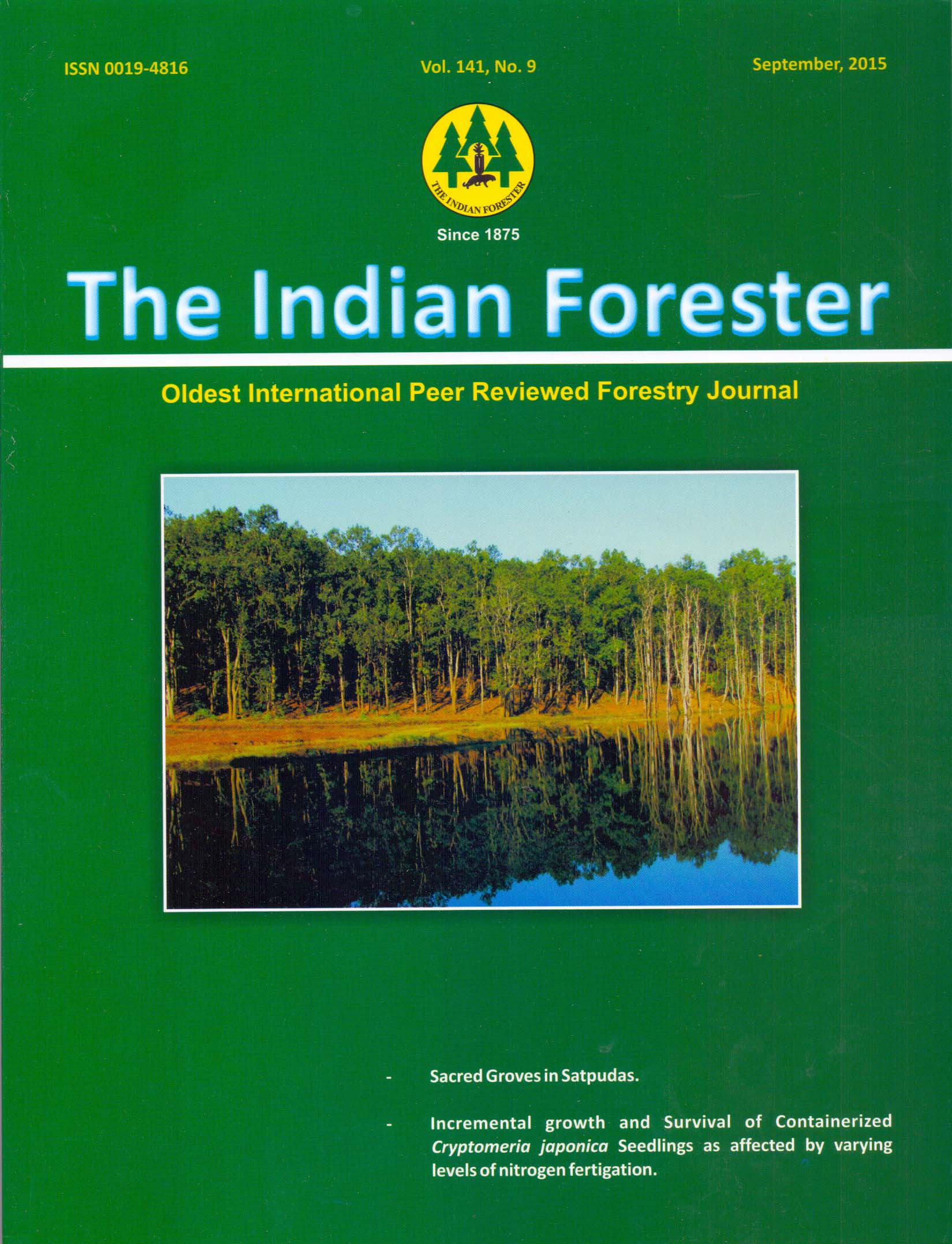Development of Fire Retardant formulations for Plywood Protection
DOI:
https://doi.org/10.36808/if/2015/v141i9/79859Keywords:
Fire Retardant, Flame Penetration, Inflammability, Rate of Burning and Wood.Abstract
Wood is one of the most sustainable, aesthetically pleasing and environmentally benign materials. Dry wood materials are susceptible to fire hazards and results heavy losses of life and materials every year; hence protection against fire is necessary. The present study deals with the treatment of plywood with two different fire retardant cum preservative compositions by vacuum pressure method to offer protection against fire and bio-deterioration. The performance of treated plywood against fire is tested by flame penetration test, inflammability test and rate of burning test as per Indian Standards. The results showed that the mean time taken by control i.e. 17:24 and 19:44 minutes was significantly different (P < 0.05) from both compositions "A" (32:07 and 30:32 minutes) and "B" (42:03 and 33:53 minutes) in Flame penetration test and Inflammability test respectively whereas, in rate of burning test the time of weight loss from 30 to 70 percent were 1:44 minutes in control which was significantly lower than both the composition "A" (26:22 minutes) and "B" (27:58 minutes). Hence, it may be concluded that both the formulations performed as per standard and it can be recommended for application.References
Ayrilmis N., Candan Z. and White R.H., (2007). Physical, mechanical, and fire properties of oriented strandboard with fire retardant treated veneers. Holz als Roh-und Werkstoff, 65(6): 449–558.
Beall F.C. and Eickner H.W. (1970). Thermal degradation of wood component: A review of the literature. U.S.D.A. For. Serv. Research Paper.FPL 130, For. Prod. Lab., Madison, Wis.
Browne F.L. (1958). Theories of the combustion of wood and its control. U.S.D.A., Forest service, For. Prod. Lab. Rep. No. 2136.
Dev I. and Kumar S. (1982). Studies on fire-retardant cum antiseptic compositions. J. Timb. Dev. Assoc., 28(4): 30-33.
Dev I. and Lal R. (1988). Fire performance of treated plywood. J. Timb. Dev. Assoc., 34(3): 1-4.
Drysdale D. (1998). An introduction to fire dynamics. Second edition. John wiley & sons, 447 p.
Goldstein I.S. (1973). Degradation and protection of wood from thermal attack."Wood deterioration and its prevention by preservative treatment".Vol.1 edited by D.D. Nicholas, Syracuse Univ. Press, Syracuse N.Y. p307-339.
Hull T.R., Witkowski A., Hollingbery L. (2011). Fire retardant action of mineral fillers. Polymer Degradation and Stability, 96:1462–1469.
IS: 5509 (1980). Specification for fire retardant plywood. Bureau of Indian Standard, New Delhi.
IS: 303 (1989). Specification for plywood for general purposes. Bureau of Indian Standard, New Delhi.
IS: 401. (2001). Preservation of timber-code of practice. Bureau of Indian standards. Manak Bhawan, New Delhi, India.
Jakimavicius C. (1998). Medienotyra [Timber study]. Kaunas:Technologija. 248 p.
Kanury A.M. (1972). "Ignition of Cellulosic Solids - a review", Fire Research Abs. Rev., 14, 24-52.
Lally T.J. (2010). Fire retardant method for manufacturing fire retardant cellulosebased. US Patent, US, 7776 179 B2, 17 Aug 2010.
Lee H.L., Chen G.C., Rowell R.M. (2004). Thermal properties of wood reacted with a phosphorus pentoxide-amine system. Journal of Applied Polymer Science, 91(4): 2465-2481.
Levan S.L. (1984). Chemistry of Fire Retardancy. U.S. Department of Agriculture, Forest Service, Forest Products Laboratory, Madison, WI 53705. pp.531-574.
Levan, S.L. and Tran H.C. (1990). The role of boron in flame-retardant treatments. Paper presented at the first international conference on wood protection with diffusible preservatives, Forest Products Research Society. Madison, WI.
Matson A.F., Dufour R.E., and Breen J.F. (1959). Survey of available Information on Ignition of Wood exposed to moderately elevated temperatures, Part II of performance of type B gas Vents for gas-fired appliances (Bull. of Research 51), Underwriters' Laboratories, Inc., Chicago.
Meng X.Y., Ye L., Zhang X.G., Tang P.M., Tang J.H. and Ji X. (2009) Effects of expandable graphite and ammonium polyphosphate on the flameretardant and mechanical properties of rigid polyurethane foams. J. Appl. Polym. Sci., 114:853–863.
Ostman B.A.L. and Tsantaridis L.D. (1995). Heat release and classification of fire retardant wood products. Fire and Matarials, 19 (6): 253-258.
Ogawa Y. and Siina N. (1993). Fire retardant chemicals of wood ( in Japanese). Mokuzai Hozon (Japanese), 19(5): 235-249.
Purushotham A. Pande J.N. and Sud., J.S. (1963). A note on fire resistive cum antiseptic composition and fire resistive paint. J. Timb. Dev. Assoc., 9(3): 27-28.
Rowell R.M., (2005). Handbook of wood chemistry and wood composites. CRC Press, 2000 N.W. Corporate Blvd., Boca Raton, Florida 33431, USA, 467 pp.
Samani A., Tripathi S. and Ramlal (2009). Performance evaluation of Bambusa tulda treated with different fire retardant composition. The Indian Forester, 135(9): 1202-1208.
Su W., Subiyakto Y., Hata T., Imamura Y. and Ishihara S. (1997). Improvement of the fire retardaney of strandboard by surface treatment with Melamine and Boric or phosphoric acid. Mokuzai Gakkaishi (Japanese), 43(1): 75-81.
White R.H., (1979). Oxygen index evaluation of fire-retardant-treated wood. Wood Science, 12(2): 113–121.
Wladyka-Przybylak M. and Kozlowski M. (1999). The thermal characteristics of different Intumescent coating. Fire and Materials, 3(1): 33-43.
Downloads
Downloads
Published
How to Cite
Issue
Section
License
Unless otherwise stated, copyright or similar rights in all materials presented on the site, including graphical images, are owned by Indian Forester.





